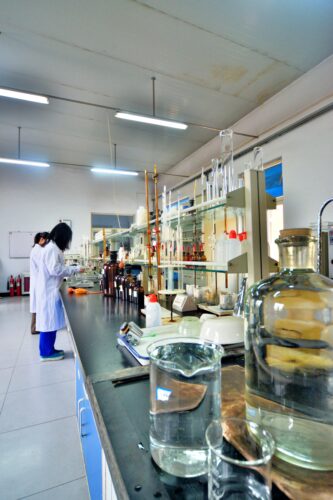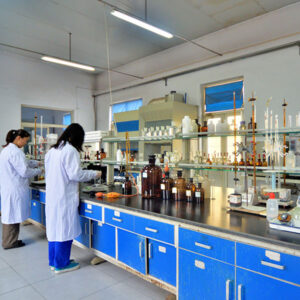Applications of Lithium Dodecyl Sulfate (LDS) vs. Sodium Dodecyl Sulfate (SDS)
When discussing the applications of Lithium Dodecyl Sulfate (LDS) versus Sodium Dodecyl Sulfate (SDS), it’s essential to highlight the contexts in which each surfactant excels and any specific uses that make one preferable over the other. Here’s a detailed exploration of their applications:
- Laboratory Applications:
Sodium Dodecyl Sulfate (SDS):
Protein Denaturation: SDS is a staple in biochemical laboratories, particularly for its use in SDS-PAGE (polyacrylamide gel electrophoresis). It denatures proteins and imparts a uniform negative charge, allowing for size-based separation.
Cell Lysis: SDS is commonly used in cell lysis buffers to break open cells and release their contents for further analysis.
DNA Extraction: SDS helps in lysing cells and denaturing proteins during DNA extraction protocols, facilitating the purification of nucleic acids.
Lithium Dodecyl Sulfate (LDS):
Niche Protein Studies: LDS might be used in specific protein studies where lithium ions offer unique interaction properties, potentially stabilizing certain protein structures differently than SDS.
Specialized Cell Lysis: In cases where the presence of sodium ions might interfere with subsequent biochemical assays, LDS can be a suitable alternative.
- Industrial Applications:
SDS:
Detergent and Cleaning Products: Due to its excellent surfactant properties, SDS is widely used in household and industrial cleaning products, including shampoos, toothpaste, and laundry detergents.
Emulsification: SDS is effective in emulsifying oils and fats, making it useful in the formulation of paints, coatings, and various cosmetic products.
Textile Processing: SDS is used in the textile industry for processes such as scouring, where it helps remove natural oils and processing residues from fibers.
LDS:
Specialized Detergents: LDS might be used in specialized cleaning products where lithium-based formulations are preferred for specific material compatibility or performance reasons.
Battery Industry: While not a surfactant application per se, lithium compounds are crucial in battery technology. LDS could potentially be explored for cleaning or processing components within lithium battery manufacturing.
- Pharmaceutical and Cosmetic Applications:
SDS:
Pharmaceutical Formulations: SDS is used in various pharmaceutical formulations to enhance the solubility and bioavailability of active pharmaceutical ingredients (APIs).
Cosmetics: SDS is a common ingredient in shampoos, body washes, and other personal care products due to its foaming and emulsifying properties.
LDS:
Sensitive Formulations: LDS may find use in pharmaceutical and cosmetic formulations where the presence of lithium ions could offer benefits, such as reduced irritation or improved stability for certain active ingredients.
Innovative Products: LDS could be explored in the development of new cosmetic products that aim to leverage the unique properties of lithium-based surfactants.
- Environmental and Biocompatibility Considerations:
SDS:
Environmental Impact: SDS is known for its potential environmental impact as it can be harmful to aquatic life. Biodegradation and environmental persistence are important factors.
Biocompatibility: SDS can be irritating to skin and mucous membranes, which limits its use in certain applications.
LDS:
Potential for Reduced Toxicity: Depending on its formulation and application, LDS might offer an alternative with different environmental and biocompatibility profiles. Research into the biodegradability and toxicity of LDS compared to SDS could reveal significant differences.
Specialized Applications: LDS might be selected for applications where reduced environmental impact or improved biocompatibility is crucial.
- Research and Development:
SDS:
Well-Documented: Given its long history and widespread use, SDS is extensively studied and documented, making it a go-to surfactant for many standard applications.
LDS:
Emerging Research: LDS represents an area of emerging research. Its unique properties due to the lithium ion can lead to novel applications and discoveries, particularly in fields requiring tailored surfactant behavior.
In conclusion, while SDS is widely recognized and used across various industries for its surfactant properties, LDS offers potential advantages in niche and specialized applications. Understanding the specific requirements of each application can help determine the most suitable surfactant, whether it be SDS for its established performance or LDS for its unique properties.











